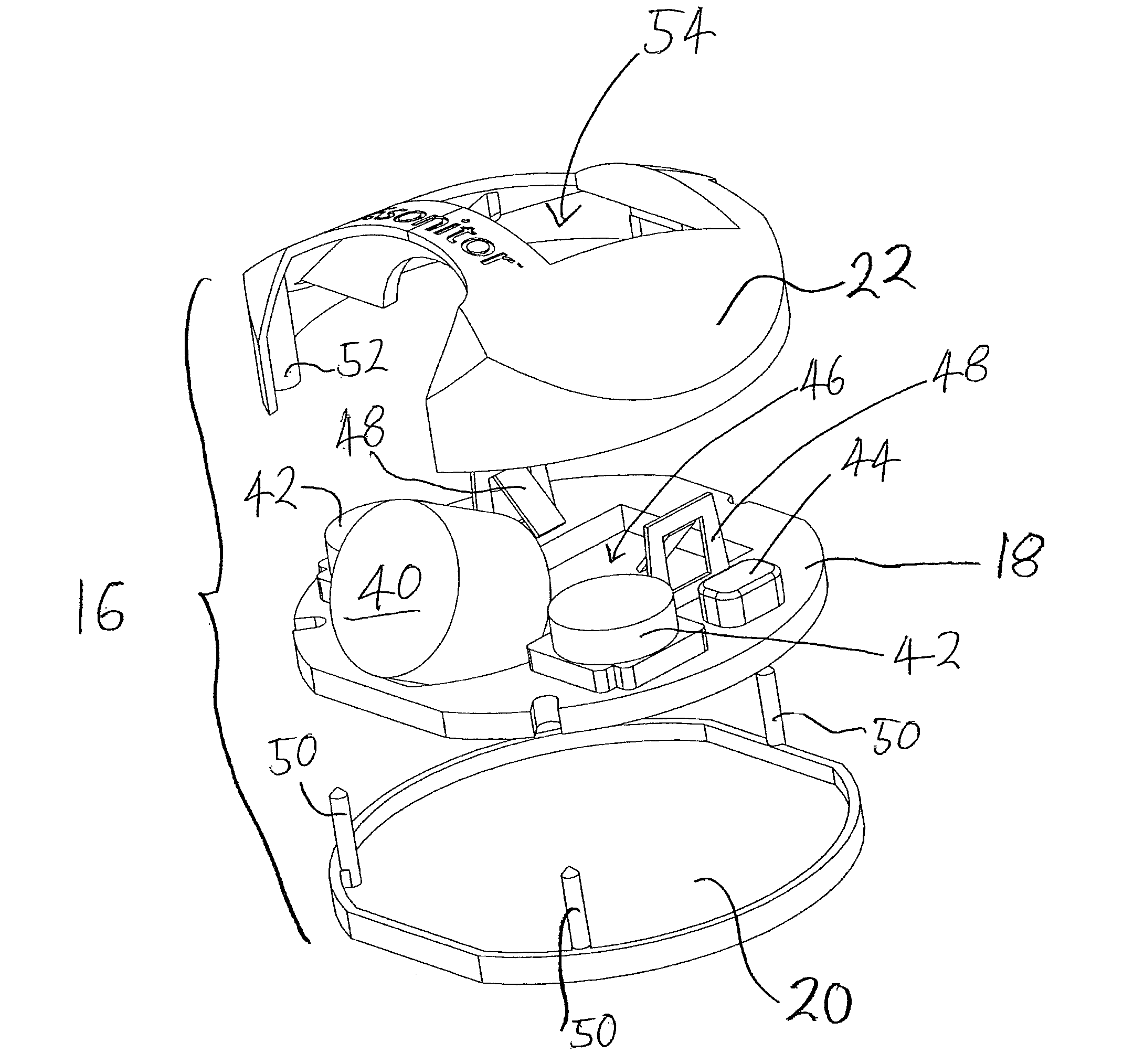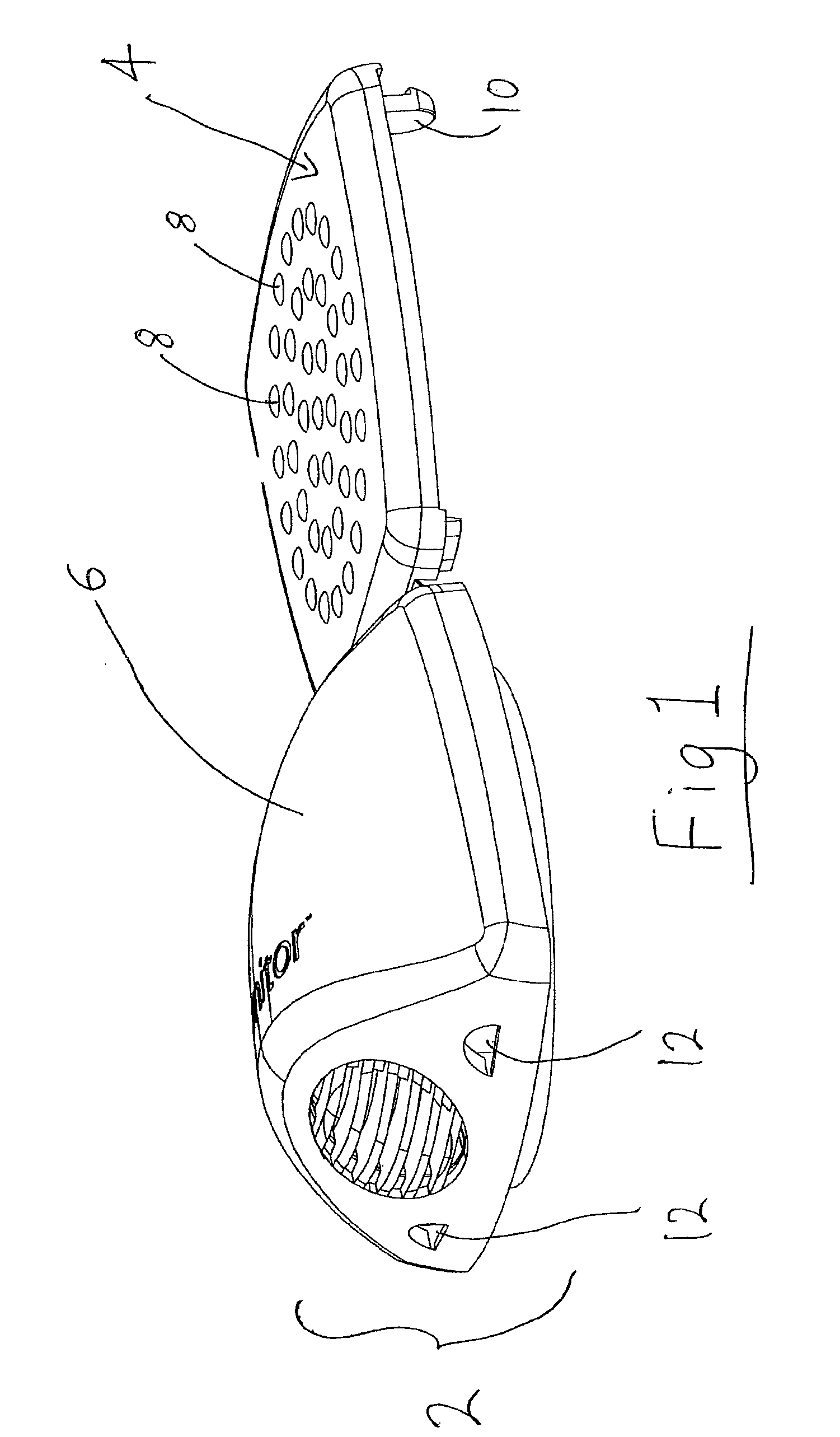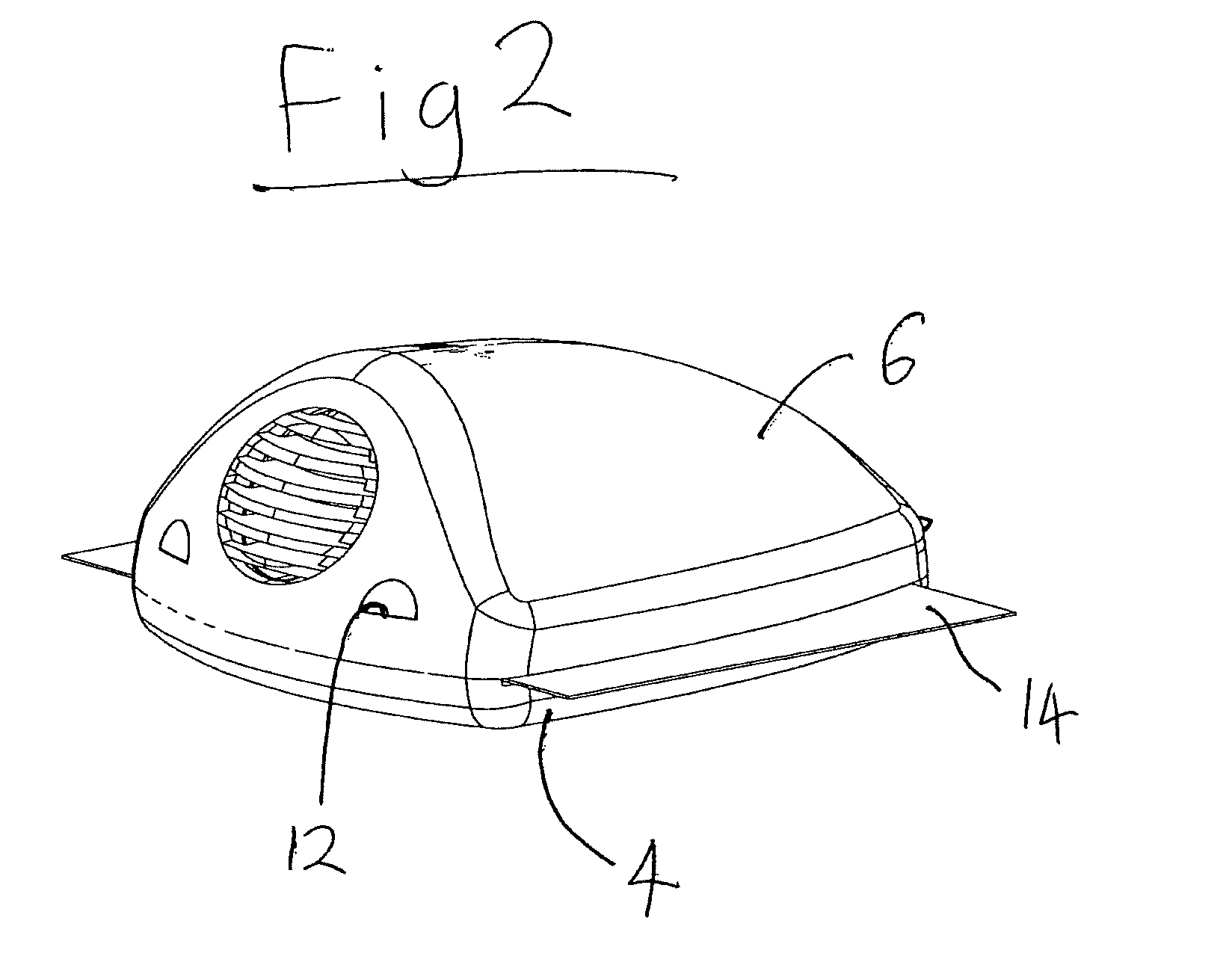Identification devices
a technology of identification devices and identification signals, applied in the direction of visible signalling systems, instruments, signalling systems, etc., can solve the problems of reducing the efficiency of staff and some common resources such as surgical theatres and emergency departments, and achieve the effects of strong activation signals, low power consumption, and extended battery li
- Summary
- Abstract
- Description
- Claims
- Application Information
AI Technical Summary
Benefits of technology
Problems solved by technology
Method used
Image
Examples
Embodiment Construction
[0032]FIG. 1 shows an ultrasonic identification tag for identifying, and / or tracking the movements of, a patient in a hospital. The embodiment described herein has been developed so as to be particularly suitable for this application, although the skilled person will appreciate that the principles embodied may find useful application in a wide variety of uses.
[0033]The tag comprises two main parts which are a main body portion 2 and a hinged flap portion 4. The flap portion 4 is molded integrally with the upper body shell 6 to faun a so-called living hinge (not shown). On the upper face (as seen in FIG. 1) of the flap portion 4 are formed a series of rounded protrusions 8. This will be the part of the tag which presses against the patient's skin, and the protrusions 8 help to prevent the tag from slipping and make the tag more comfortable for the patient to wear for a prolonged period of time without causing skin irritations or reactions. The material of the outer shell is biodegrad...
PUM
 Login to View More
Login to View More Abstract
Description
Claims
Application Information
 Login to View More
Login to View More - R&D
- Intellectual Property
- Life Sciences
- Materials
- Tech Scout
- Unparalleled Data Quality
- Higher Quality Content
- 60% Fewer Hallucinations
Browse by: Latest US Patents, China's latest patents, Technical Efficacy Thesaurus, Application Domain, Technology Topic, Popular Technical Reports.
© 2025 PatSnap. All rights reserved.Legal|Privacy policy|Modern Slavery Act Transparency Statement|Sitemap|About US| Contact US: help@patsnap.com



